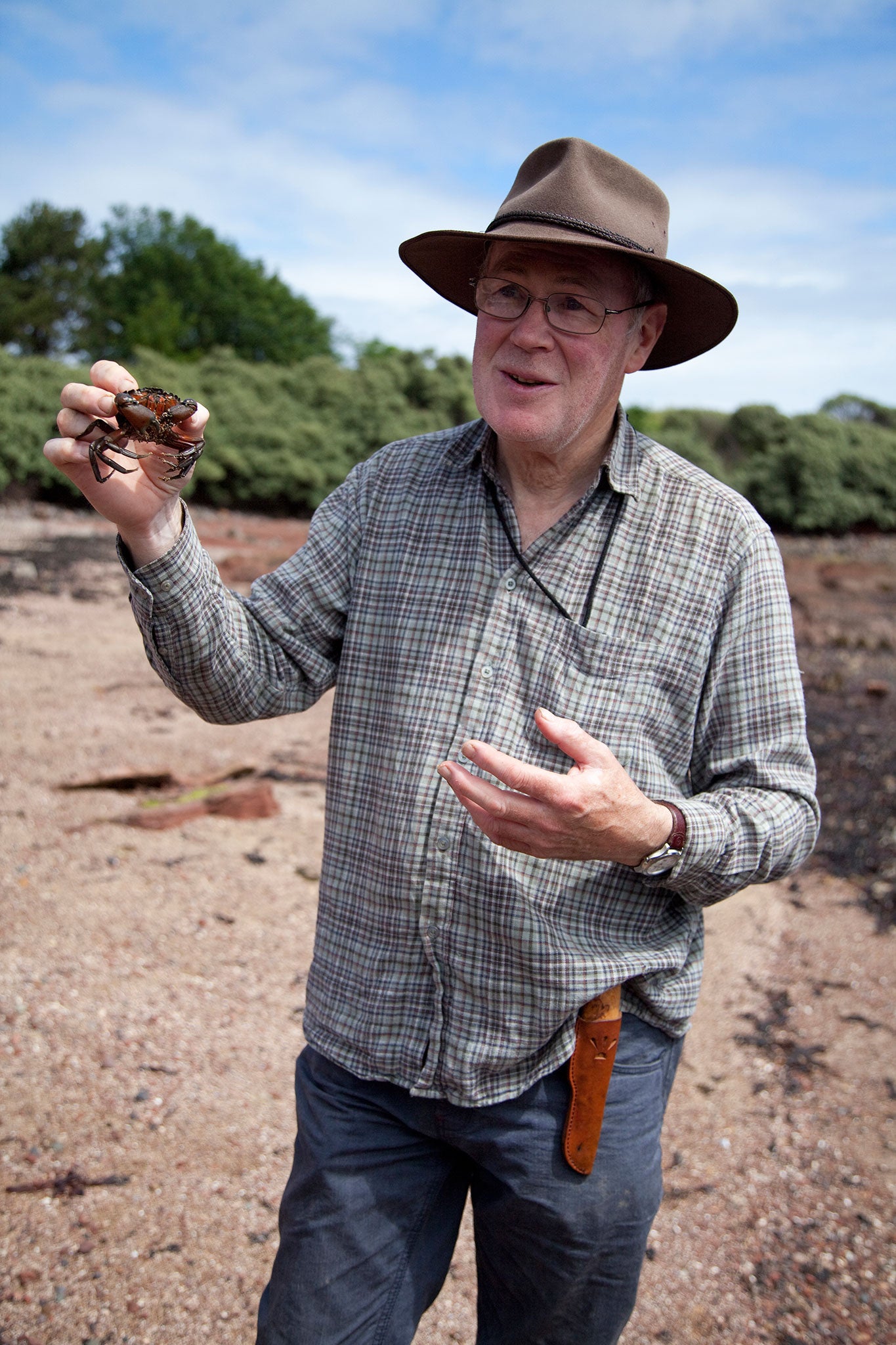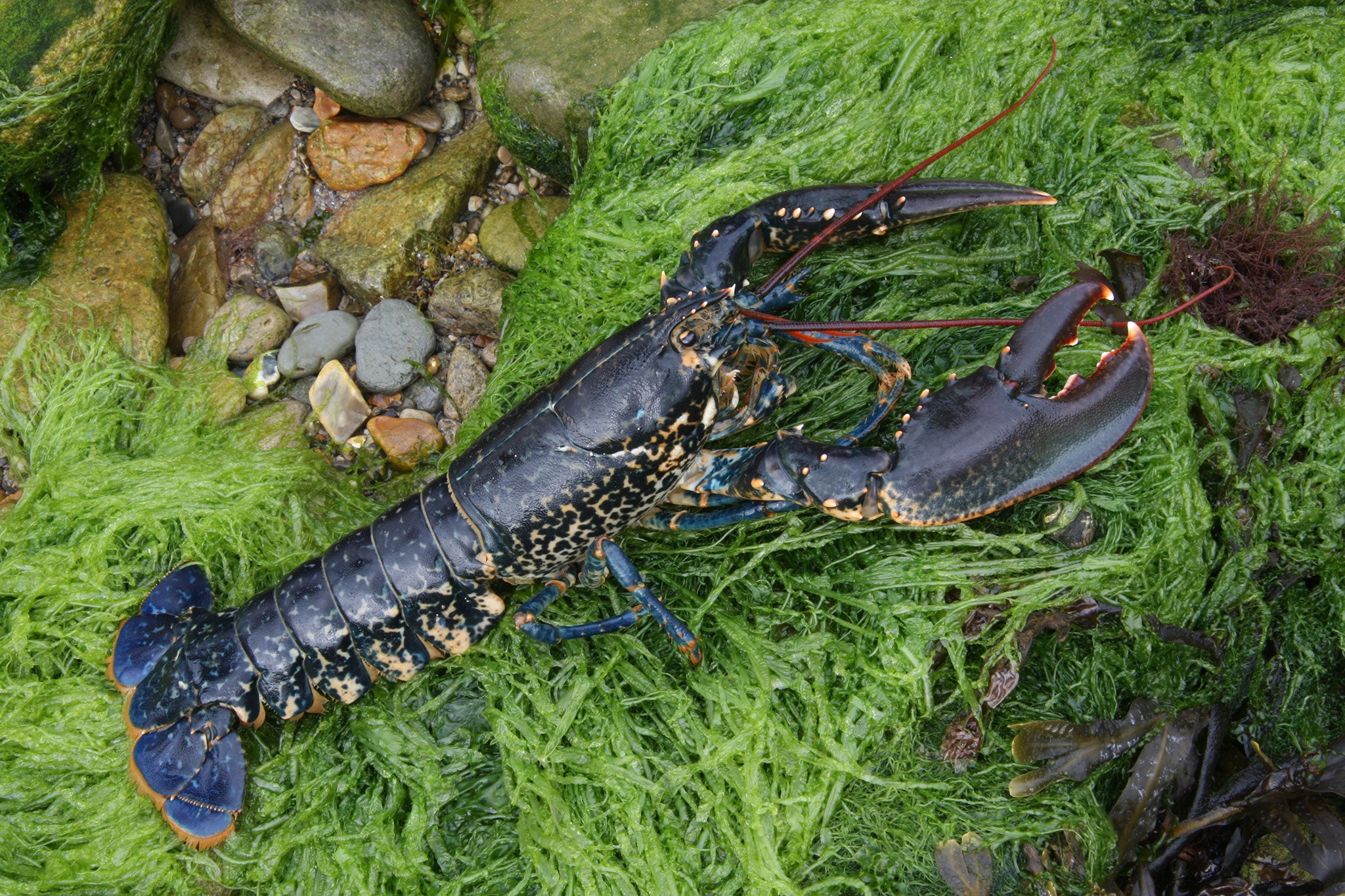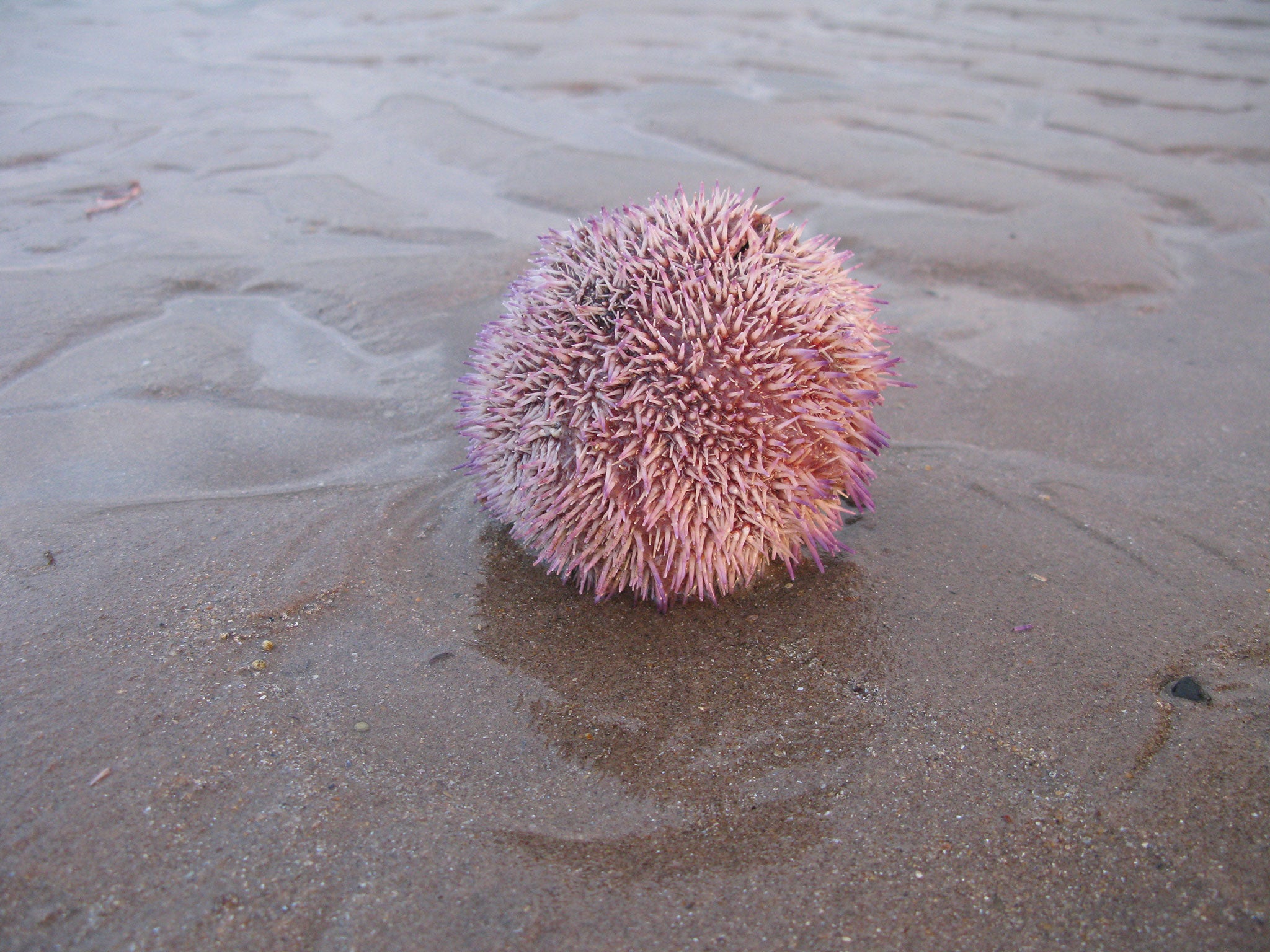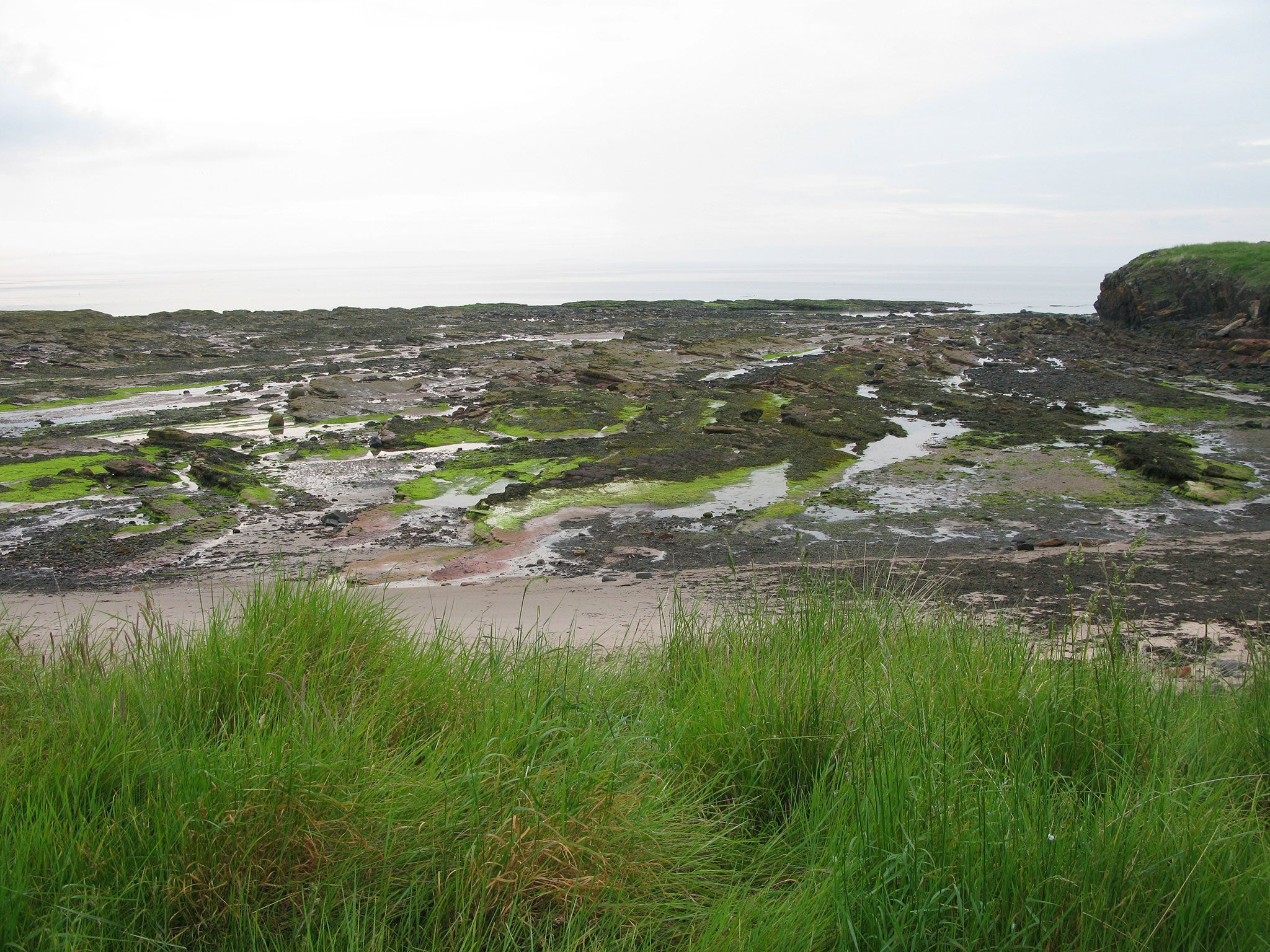How to become a shoreline forager: John Wright unearths a natural bounty on the Scottish coastline
The author of the River Cottage Handbook 'Edible Seashore' has nearly 50 years' experience of foraging

Your support helps us to tell the story
From reproductive rights to climate change to Big Tech, The Independent is on the ground when the story is developing. Whether it's investigating the financials of Elon Musk's pro-Trump PAC or producing our latest documentary, 'The A Word', which shines a light on the American women fighting for reproductive rights, we know how important it is to parse out the facts from the messaging.
At such a critical moment in US history, we need reporters on the ground. Your donation allows us to keep sending journalists to speak to both sides of the story.
The Independent is trusted by Americans across the entire political spectrum. And unlike many other quality news outlets, we choose not to lock Americans out of our reporting and analysis with paywalls. We believe quality journalism should be available to everyone, paid for by those who can afford it.
Your support makes all the difference.There is something about a seashore foray that can raise the spirits of all but the most intractably morose individual. Paddling around in rock pools, and doing so with a purpose – to find food – is one of the most natural of activities, and it shows on people's faces.
Often the food comes in huge quantities, from seashore plants to seaweeds, from shrimps to lobsters. Adults become children again. Indeed, I've known hardhearted hedge-fund managers shed tears of joy, telling me that it was their best day out for years.
And so it is, as a forager with nearly 50 years' experience, that I run seashore forays. Most take place on the gentle coast of Dorset, but recently I have begun exploring the less tamed beaches of Scotland, in particular, near Dunbar. This is how they go…
5am
My tent is situated in paradise by the sea, nestling in soft grass beneath coastal pines, amid the occasional unwelcome pine cone. I'm asleep. My fellow forager, Monica Wilde, calls from the other tent, "John! Are you awake? What time is it?" My answers are, "Yes" and "Five o'clock." My life is ruled by tides, and we need an early start to catch the spring low – but five o'clock is always absurd. The light overnight rain has gone and the sun is making sterling efforts on our behalf, so I clamber inelegantly out of the tent, make preparations for the day, and linger over the essential breakfast beer.
8.30am
Three hours later – I said the five o'clock start was absurd – and armed with nothing more complicated than wellies, basket, bucket and knife, we take the mile-long path through woods to the car park to meet our 15 guests for the day.
9am
We set off back to the beach, but to another part, to make a triangle of our walk.
9.30am
After a mile of reasonably productive hedgerows (dandelion, burdock, beech leaves suitable for a "beech-leaf noyau" – a classic cocktail mixer made from gin, with sugar, brandy and the young leaves), we find ourselves not on the beach, but on the saltmarshes behind. Here is sea aster, a pleasantly succulent salad vegetable, but also, and much more of a revelation, sea arrowgrass, which tastes startlingly of coriander. The saltmarsh is a treacherous place, for it is criss-crossed with muddy channels that we all leap across, with variable success. However, here we find that favourite wild delectable, samphire. It is in season and almost fully grown, so we carefully cut some for our tea.

9.50am
Past the saltmarsh we come to a sandy beach with dunes. A common plant in this habitat is sea rocket. I break off a leaf for everyone, telling them to start chewing when I say go. Their faces are a picture. Sea rocket is mild at first, but, like its cultivated cousins, becomes hot and peppery with chewing. It is, in effect, wild wasabi. Less of a challenge are the oraches that grow in profusion above the strandline. These are bitter raw, but cook to sweetness like their relative, spinach.
10.10am
The sand gives way to a broad tidal zone of rock and rock-pool, interspersed with cockle-rich sand. The rocks themselves sport vast colonies of mussels and winkles, a few of which find their way into our buckets. Then, at last, the rocky plain breaks into boulders and we come to the sea.

10.30am
What excites me most are the seaweeds, and I enthuse about these disregarded treasures to my guests in the hope that I might inspire them to give weeds a chance. We have 700 species around our shores, none of which is poisonous, and 20 or so of which are common and good to eat. The British are not great seaweed-eaters, though we eat more than we think in processed foods, such as milkshakes, and as thickener in toothpaste. What keeps people from eating seaweeds? It is neither the taste nor difficulty in supply, it is simply that few of us have a clue as to what to do with them. But each has its own character and should be used in its own way.
10.40am
Our rocky shore is prolific, and we slip and slide dangerously on the fronds. Here are massive brown kelps – used like a bay leaf to add flavour; red fronds of dulse, which steam nicely to a cabbage-like texture and taste (not to mention an appealing suggestion of iodine) and make the best crisps in the world; the brown and bushy carragheen, which is used to set panna cotta; and the thin, transparent brown fronds of laver. Laver can be dried and toasted as a sprinkle for fishy dishes, or boiled (for a staggering 10 hours) to make laver bread – a Marmite-like substance much loved by the Welsh in oatcakes fried in bacon fat.

11.40am
The walk back to our campsite brings a big surprise. I like to put out crab pots the day before a foray, but they are not easily transported on the flight we have taken to get to Scotland. However, lodged between two rocks we find a fisherman's lost pot containing two brown crabs, three velvet swimming crabs, a sea urchin and two lobsters. Magnanimous in our good fortune, we let the smallest of the catch go to fight another day and take the rest back with us.
1pm
Back at camp, the messy business begins of preparing what we have found. Although some beaches are polluted, it is not such a problem these days and I have no concerns. A quick phone call to the local Port Health Authority will reassure anyone who is nervous. Today's haul is a wonderful collection, though it's not really enough to feed us all. Being prepared is everything, and to add to our feast we had brought along mussel-and-herb sausage stew; smoked pollack-and-dulse tart served with our collected wild salad du jour; and, best of all, seaweed-and-elderflower pudding (which is much nicer than it sounds), served with sea-buckthorn syrup.

3pm
Waking up some of our guests (I always bring booze to these events), we take a quick walk through the woods to find chickweed (an excellent pakora ingredient), sweet cicely – a northern wild specialty that tastes of aniseed – and a group of unseasonably early mushrooms known as Blushers.
4.30pm
It is time for our tired and slightly sunburnt guests say goodbye.
5pm
Pack up camp.
6.30pm
We take a final walk along the beach, chasing the leaping sand fleas, and I idly wonder whether these would make a good bisque. The setting sun catches the rust-coloured rocks, making them glow a brilliant red, contrasted by the greens and browns of the seaweeds atop them. And, I think, I have had one of my best days out for years.
John Wright is the author of the River Cottage Handbook 'Edible Seashore' (£14.99, Bloomsbury). For more about his foraging forays: wild-food.net. For more on Monica Wilde: monicawilde.com
Join our commenting forum
Join thought-provoking conversations, follow other Independent readers and see their replies
Comments